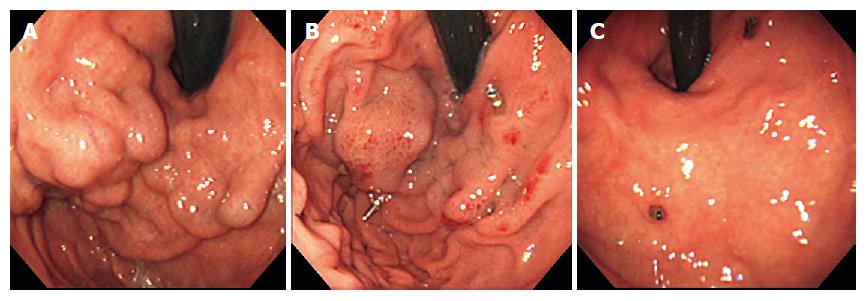Copyright
©2005 Baishideng Publishing Group Inc.
World J Gastroenterol. Dec 21, 2005; 11(47): 7515-7519
Published online Dec 21, 2005. doi: 10.3748/wjg.v11.i47.7515
Published online Dec 21, 2005. doi: 10.3748/wjg.v11.i47.7515
Figure 1 Case 5, a 53-year-old woman.
(A) The endoscopic view revealed Lg-f F3 type varices. (B) One week after the procedure, endoscopic findings revealed varices to be unchanged in size, although the gastric varices had developed bronze discoloration. (C) One month after B-RTO therapy, complete disappearance of the varices was observed, and this persisted for about 3 mo.
Figure 2 Case 5, a 53-year-old woman.
(A) Angiographic findings (conventional arterial portography) the short gastric vein and the posterior gastric vein were revealed as inflowing, and the gastrorenal shunt and left inferior phrenic vein as outflowing. (B) Using CT-MIP, clear images of gastric varices were obtained. (C) CT-MIP 1 wk after the treatment revealed disappearance of the gastrorenal shunt.
- Citation: Ishikawa T, Ushiki T, Mizuno KI, Togashi T, Watanabe K, Seki KI, Ohta H, Yoshida T, Takeda K, Kamimura T. CT-maximum intensity projection is a clinically useful modality for the detection of gastric varices. World J Gastroenterol 2005; 11(47): 7515-7519
- URL: https://www.wjgnet.com/1007-9327/full/v11/i47/7515.htm
- DOI: https://dx.doi.org/10.3748/wjg.v11.i47.7515














